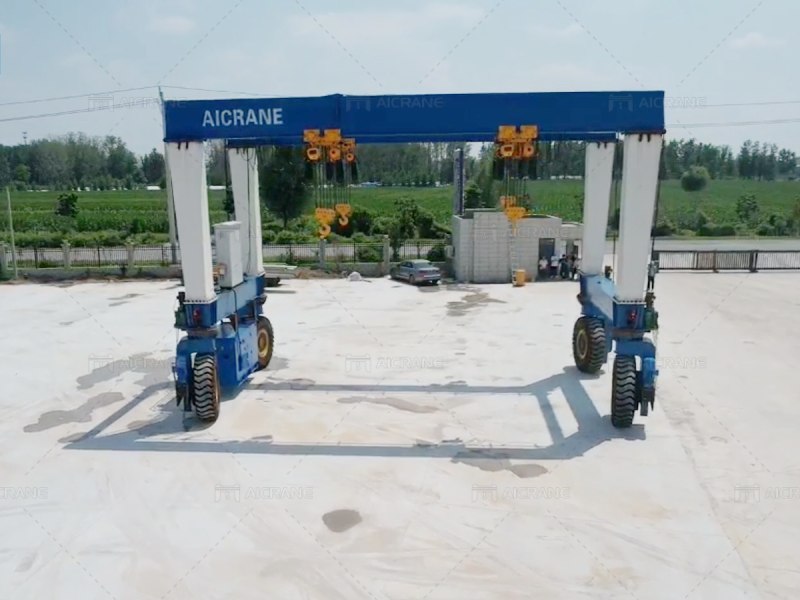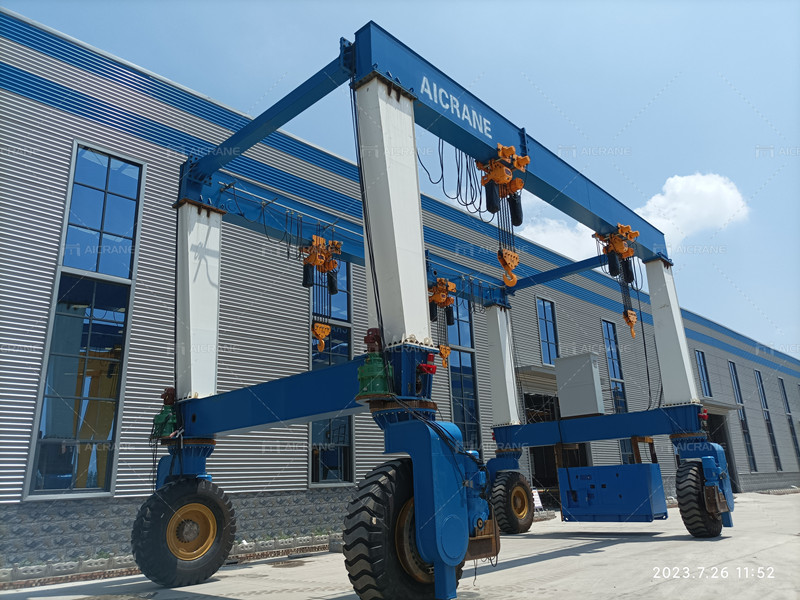Operating a rubber tire crane requires a combination of skill, knowledge, and attention to detail to ensure safe and efficient lifting operations. Rubber tire cranes, also known as mobile cranes, are versatile lifting machines equipped with tires for mobility, allowing them to move easily across various terrains and job sites. These cranes are commonly used in construction, infrastructure development, industrial maintenance, and other applications requiring heavy lifting capabilities. In this comprehensive guide, we’ll explore the key steps and considerations involved in operating a rubber tire crane safely and effectively.

Pre-Operational Checks
Before operating a rubber tire crane, it is essential to conduct thorough pre-operational checks to ensure that the crane is in safe working condition. Begin by visually inspecting the crane’s exterior for any signs of damage, such as dents, rust, or leaks. Check the condition of the tires, ensuring that they are properly inflated and free from cuts or abrasions.
Inspect the crane’s fluid levels, including engine oil, hydraulic fluid, and coolant, and top up as needed. Verify that all safety devices, such as lights, alarms, and emergency stop buttons, are functioning correctly. Ensure that the crane’s load chart and operator’s manual are readily accessible for reference during operation.
Familiarize Yourself with Controls
Next, familiarize yourself with the crane’s controls and operating systems before attempting to lift any loads. Depending on the model and manufacturer, rubber tire cranes may be equipped with a variety of control mechanisms, including joysticks, levers, pedals, and touchscreens.
Take the time to understand the function of each control and how they interact with the crane’s various components, such as the boom, jib, winch, and outriggers. Practice using the controls in a controlled environment to develop confidence and proficiency in operating the crane safely and efficiently.
Conduct Site Assessment
Before commencing lifting operations, conduct a thorough assessment of the job site to identify any potential hazards or obstacles that may affect crane operation. Evaluate the ground conditions, slope, and stability to ensure that the crane can be safely positioned and operated.
Identify the location of overhead obstacles, power lines, and other obstructions that may interfere with the crane’s movement or pose a risk of contact during lifting operations. Establish clear communication protocols and signal hand gestures with ground personnel to facilitate safe and efficient crane operation.

Positioning and Setup
Once the site assessment is complete, carefully position the rubber tire crane in the designated work area using the crane’s mobility features. Extend the outriggers or stabilizers to provide additional stability and support during lifting operations, ensuring that they are firmly planted on solid ground.
Refer to the crane’s load chart and capacity ratings to determine the appropriate boom configuration and lifting parameters for the intended load. Adjust the boom angle, length, and extension as necessary to achieve the desired reach and height for the lift.
Load Handling and Lifting
With the crane properly positioned and set up, carefully approach the load using smooth and controlled movements. Position the gantry crane directly over the load, ensuring that the rigging is properly attached and secured to the load’s center of gravity.
Use the crane’s hoist and winch controls to lift the load steadily and evenly, avoiding sudden jerks or movements that could destabilize the crane or the load. Maintain clear communication with ground personnel to coordinate lift operations and ensure safety throughout the process.
Monitor the load and crane dynamics closely during lifting operations, adjusting the boom angle and load positioning as needed to maintain stability and control. Be mindful of environmental factors such as wind, weather conditions, and changing terrain that may affect crane performance and safety.
Post-Operational Checks
After completing lifting operations, conduct post-operational checks to assess the crane’s condition and ensure that it is ready for future use. Lower the load carefully to the ground and secure the crane’s controls to prevent unauthorized operation.
Inspect the crane for any signs of damage or wear, paying particular attention to critical components such as the boom, rigging, hydraulic cylinders, and safety devices. Report any abnormalities or concerns to maintenance personnel for further evaluation and repair.
Clean and lubricate the crane’s moving parts and mechanisms as needed to maintain optimal performance and prevent corrosion. Store the crane in a secure location away from potential hazards or adverse weather conditions until it is needed for the next lifting operation.
In conclusion, operating a rubber tire crane requires careful planning, preparation, and execution to ensure safe and efficient lifting operations. By following the steps outlined in this guide and adhering to best practices for crane operation and safety, operators can minimize risks, maximize productivity, and maintain a safe working environment for all personnel involved.